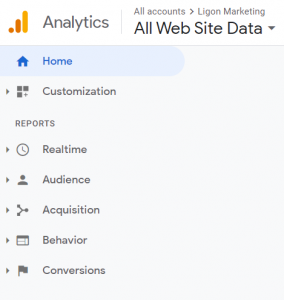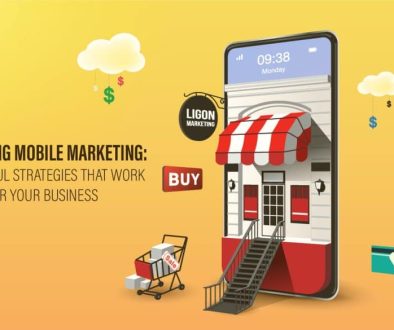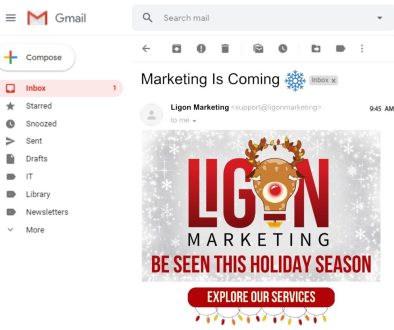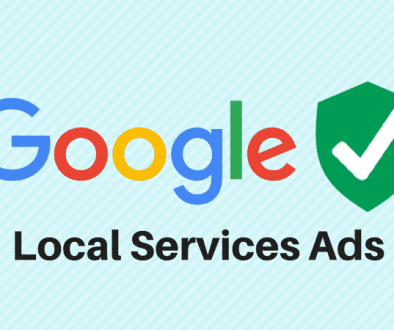Digital Advertising Part III: All About Google Ads
Welcome to part three in our running blog series about digital advertising. So far, we’ve discussed what digital advertising is and the pros and cons of each type of digital ad. If you’ve made it this far, we hope you’re putting some serious thought into how paid search and other forms of digital advertising could positively impact your business.
No discussion on digital advertising is complete without talking about the largest driver of paid search campaigns in the U.S.: Google Ads (formerly Google AdWords). While there are many types of ad campaigns you can run on Google Ads – display, video, app, shopping, etc. – this article will focus on pay-per-click (PPC) search engine advertising.
You likely see a paid search ad every time you run a query through Google – paid ads occupy the prime, top-of-page real estate on search engine results pages (SERPs). In the world of digital advertising, Google Ads boasts an impressive ROI, promotes top-of-page brand awareness, and puts your products/services directly in front of your target audience.
Is Google Ads Really That Effective?
Google sites are the most visited among popular, multi-platform web properties in the U.S., with approximately 269 million unique visitors from mobile and desktop connections. Google processes 3.5 billion searches per day and 1.2 trillion searches per year worldwide.
- Internet visitors are four times more likely to click on a paid search ad on Google than on any other search engine (Amazon, YouTube, Bing)
- Google Ads convert 50% better than organic search results
- The average conversion rate for Google Ads is 75%
- On average, businesses make $2 in income for every $1 they spend in Google ads
In conclusion…..yes. Google Ads is quite effective.
How Much Does Google Ads Cost?
The truest (and most frustrating) answer to the question posed above: it depends. Advertising on Google isn’t cheap, but it doesn’t have to break the bank for small to medium sized businesses lacking thousands of ad dollars to spare.
One common misconception is that advertisers with the largest budgets score the highest rankings and exert more influence over paid search. But Google is not strictly pay-to-play. The platform wants to show visitors useful and relevant advertising to preserve its own credibility and trustworthiness as a search engine. That means ad quality and relevance matter when Google determines ad rankings, a factor that evens the playing field for advertisers of all budgets.
Ad quality and relevance matter when Google determines ad rankings, a factor that evens the playing field for advertisers of all budgets.
Google gives complete control over setting an ad budget and determining how much you’re willing to pay for ad performance. Investing more money into Google Ads helps, but you can still run successful paid search campaigns on a smaller budget.
Google Ads pricing is different for every ad. To understand why, keep reading to learn how the ad auction works.
How Google Determines Ad Ranking
Welcome to the auction. Google uses a bidding system to select placement and ranking for ads competing for the same keyword. Google processes millions of split-second ad auctions a day – an auction occurs every time a visitor lands on a SERP where ads are displayed.
There are two primary factors that determine ad positioning on a SERP.
-
Maximum bid.
The maximum bid is exactly what it sounds like. It’s the maximum amount of money you’re willing to pay for a click on your ad. Your maximum bid doesn’t necessarily determine the actual amount you’ll end up spending per click. It only sets a limit on what you’re willing to spend. The actual cost-per-click (CPC) could end up being less than what you bid for it. While CPCs vary by industry, the average CPC on Google Ads is between $1-2.
But Google Ads isn’t a pay-to-play platform, you don’t have to devote a huge budget to rank well on SERPs. Google wants to give its visitors a great experience, meaning they reward quality, relevant ads that are more likely to engage visitors and increase clicks. Their second ranking factor is heavily weighted to reward quality advertisements.
-
Quality Score.
The Quality Score is determined by the overall quality and user relevance of your ad, keywords, and landing page. Google also turns a critical eye on the expected click-through-rate (CTR) as a scoring factor. The more people who see your ad and click it, the more Google assumes the ad is relevant and helpful. You can also improve your Quality Score by including ad extensions that provide visitors with additional information (like site links, a phone number, a location, etc.) and drive more clicks.
Here’s what it boils down to: low-bid, high-quality advertisements will rank better than high-bid, low-quality advertisements. Along with higher rankings, Google rewards stellar ad quality with lower costs-per-click (CPC).
Let’s repeat that one more time: a higher Quality Score results in a higher ranking at lower costs.
5 Components of an Effective Ad Campaign
Let’s get into the meat of Google Ads: creating a successful ad campaign. Here are five important components to help guide the ad creation process.
-
A clear ad goal.
Advertising without a goal in mind is a wasted effort – and a wasted budget, too. Google Ads offers several campaign goals to choose from, including generating leads, driving traffic to your website, making a sale, or spreading brand awareness. Having a well-defined goal helps your team target the right audience, choose an effective bidding strategy and budget, and create a compelling ad that drives interest. Additionally, having a results-oriented goal helps your team more effectively analyze success and ROI upon campaign completion.
-
Relevant, targeted keywords.
Successful Google ad campaigns are built on targeting and bidding for the right keywords. There are several free and paid tools your business can use to conduct keyword research. Here are some factors to keep in mind during the research phase.
- Who is your target audience and how are they searching for your products/services? What words and phrases are they using?
- What keywords are worth bidding on? For every potential keyword, analyze the search volume, average CPC, and competitiveness to decide which words and phrases are worth your money. Keyword research can become very tricky when you’re balancing a keyword’s value within your target industry against the likeliness of outbidding competitors and staying within budget.
- What is the user intent? Ads targeting customers in the decision stage of the buyer’s journey are more likely to drive direct conversions and sales. Research shows that 65% of Google Ads clicks are for ads that include buyer-intent keywords like “Buy,” “Shop,” “Get,” and “Purchase.”
-
A defined audience.
Make sure your ad lands in front of the people most likely to take an action on it. Google Ads offers a plethora of targeting options for you to hand-select your ideal consumer base. Build an audience based on location, demographics (age, education level, marital status, etc.), interests, lifestyle, habits, routines, and behaviors. Bigger isn’t always better when it comes to audience building – the clearer and more defined your audience is, the more likely you are to reach action-ready consumers.
-
A compelling ad.
Once you have the right keywords, incorporate them into compelling text ads that drive clicks and conversions. Persuasive and engaging ads that excite and entice consumers use dynamic, active language and speak to the user’s end goals and personal needs.
-
A clean landing page.
Remember that an engaging user experience continues after an ad click – make sure you optimize your landing pages for speed, quality, and attractiveness to keep consumers moving through the conversion cycle.
Google Analytics

It’s a simple task to link your Google Ads account to your Google Analytics account, and the resulting value is immeasurable. Ad analytics can (and should) help guide your paid ad strategies. Google Analytics allows you to follow ad clicks beyond the ads – you’ll be able to see the keywords and ad creatives that drive traffic to your website, the actions visitors take, and on-site engagement. You can use these valuable insights to improve future ad campaigns.
How Do I Get Started With Google Ads?
While you can set up a Google Ads account on your own, running successful paid search campaigns is a complex task to undertake if you’re new to the ad game. That’s why we highly recommend seeking help from an experienced digital advertising and PPC marketing services company like Ligon Marketing. From start to finish, our team will help you create and launch an ad strategy that helps you achieve your digital advertising and ROI goals. Call us today at 863-838-5475 or drop us a message online.






